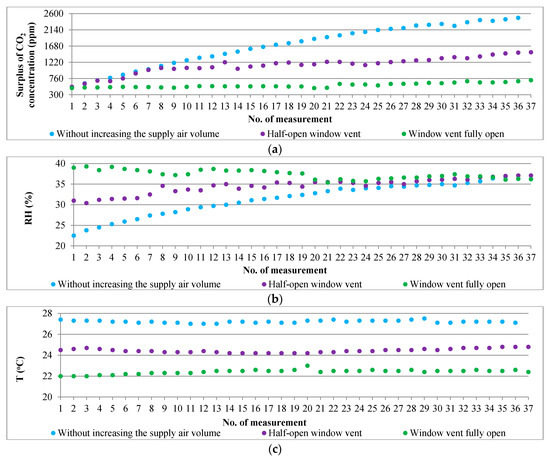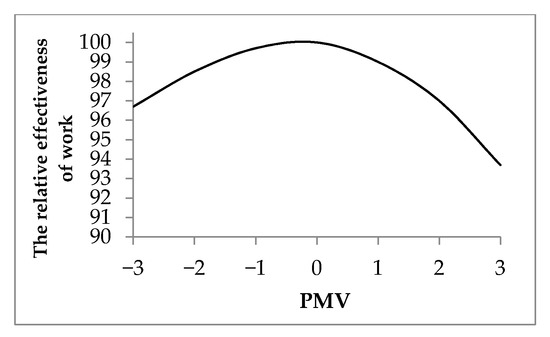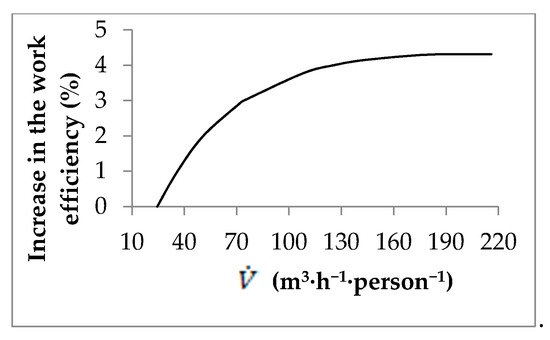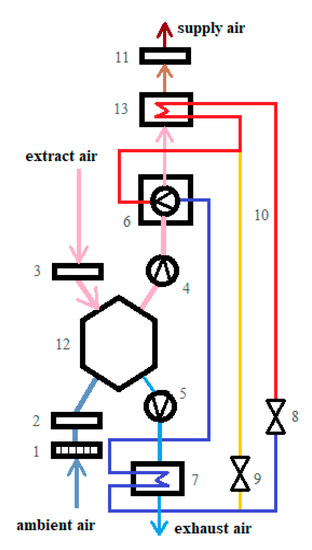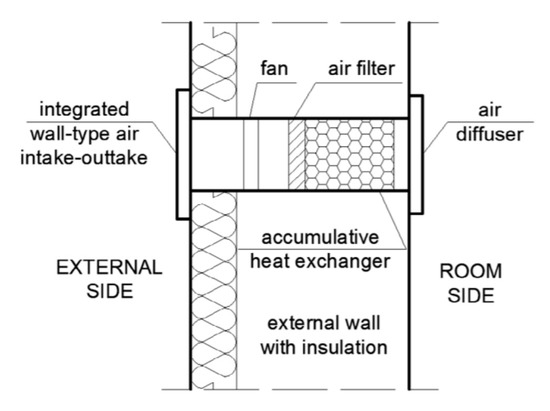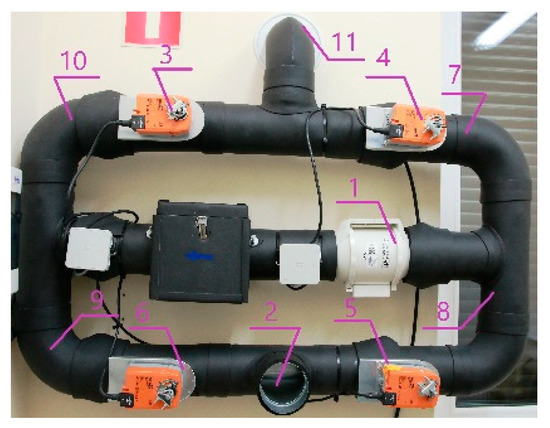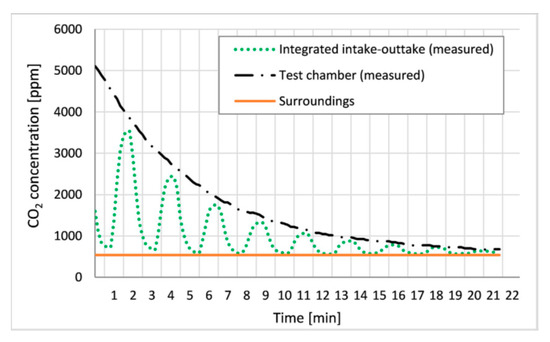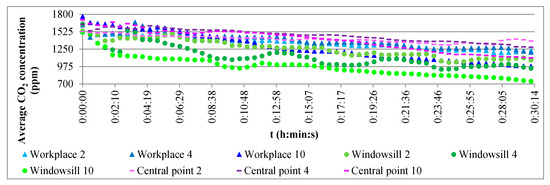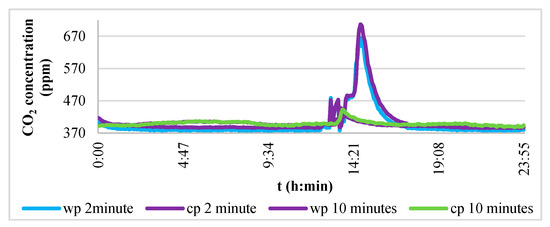The importance of air quality for health varies drastically depending on the level of development of a country. In developing countries, air pollution contributes to 3.7% of the disease burden, while in developed countries, the same factor is not listed among the top 10 pathogens [
2,
3]. According to the report of the World Health Organization (WHO) [
4], 3.8 million deaths worldwide in 2016 were the result of air pollution. In low- and middle-income countries, it is responsible for 10% of all deaths, and for 0.2% of the death in low-income countries. In China alone, the number of deaths as a result of poor air condition was 111,000, and the number of emergency room visits was 4.3 million [
5]. Among the threats necessitating the immediate hospitalisation of 37.9–52.2% of the population in China are: Lung diseases, cardiovascular diseases, cancer, or asthma resulting from the accumulation of toxic pollutants, harmful gases, metals, hydrocarbons, etc. [
6]. The main sources of pollution are those in the outside air, coming from the industry, power plants, and motor vehicles, but also resulting from the poor quality of the fuels burned (wood, coal, kerosene, etc.) [
7]. The increase in mortality is also indicated by the other authors [
8], who cite gases produced by cars as the cause of a large number of deaths. How building occupants experience air quality depends on their physical condition and age [
9], as well as their gender. It is women who more often than men assess the air quality as bad [
10,
11].
Poor air quality affects not only health [
12], but also work efficiency, reducing it, and increasing the frequency of absenteeism [
13,
14,
15,
16,
17,
18,
19,
20]. In the case of schools, it lowers learning efficiency, as described in the literature [
21,
22]. The obvious issue is the investment costs that must be borne to improve the indoor air quality. However, the costs to the employer of the absence of the employee are about 4 to 40 times higher than the costs of installing a ventilation system. In the article [
23], Sowa states that simple payback time (SBPT) for ventilation devices used to improve air quality is 1–3 years, which is really not much.
2. Improving the Indoor Air Quality
A too low exchange of air causes an increase in both the air humidity and the carbon dioxide concentration [
67]. However, increasing the amount of air in naturally-ventilated facilities is not an ideal solution, as it carries the risk of lowering the internal temperature [
68].
presents the course of changes in the relative humidity, temperature, and concentration of carbon dioxide of the indoor air from the moment students enter the classroom until they leave it. You can clearly see the improvement in air quality and the lowering of the air temperature at the same time. Students in the classroom, sitting in desks near the window, assessed the microenvironment as too cool.
Figure 2. Changes in indoor air parameters during class [
68]: (
a) Surplus concentration of carbon dioxide above the external air concentration (ppm); (
b) relative humidity—RH (%); (
c) indoor air temperature—T (°C).
Some people use plants as a way to improve air quality to reduce pollution. Potted plants can be a means of removing chemical fumes from indoor air. The results of research and analyses [
69,
70] suggest that their greatest effectiveness is manifested in the removal of VOCs in energy-saving and non-ventilated facilities. Scientists document the ability of plants to remove benzene, toluene, octane, and trichlorethylene in particular [
71], as well as formaldehyde [
72]. However, it should be noted that plants can also be a source of pollution. Placed in plastic pots, they can be a potential source of contamination. Soil with microbes and pesticides can also pose a threat to air quality. According to an analysis conducted by scientists [
73], the impact of plants on controlling air quality is actually small. The author states that the required area for green cultivation would be several square meters per person, if we were to balance the work of ventilation. In addition, plants are characterised by a high sensitivity to diseases and pests. Plants, apart from lowering the temperature, increase the humidity in the air, and moulds often appear in potting soil.
The technical equipment for the dilution of pollutants is the ventilation system. Observations presented in the literature [
74] showed that the correlation between air leakage through leaks and the pressure difference is the key to understanding the interaction between the building envelope and HVAC systems (heating, ventilation, and air conditioning). Structures that are designed and built safely ensure that the pressure field is controlled, which in turn ensures that the finished buildings are healthy, durable, comfortable, and economical.
It is purposeful to reduce the energy consumption for air exchange in the premises. The solution that combines energy efficiency with an appropriate IAQ and thermal comfort is hybrid ventilation. When it is equipped with automatic regulation with soft-sensors [
75], successfully this fulfils its task. In the literature [
76], an analysis of indoor air quality was carried out using natural and mechanical ventilation, taking into account energy consumption. The conducted analysis showed that the presence of gaseous pollutants CO
2, HCHO, O
3, and NO
3 does not depend on the ventilation system used. The amount of energy used to heat the air was lower with natural ventilation. In terms of the PM 2.5 dust pollution, the influence of both the type of ventilation system used and the location was observed. Moreover, the higher filtration efficiency significantly reduced the PM 2.5 concentration. The outside air pollution in months with moderate temperatures was higher than in periods of hot and cold temperatures. In the analysed climate model, there was often a need to use a hybrid air recirculation system in combination with natural ventilation in order to maintain comfortable conditions. However, in this case, the effect of filtration was never sufficient compared to mechanical ventilation. The final conclusion from the above-mentioned study is the legitimacy of using natural ventilation from the point of view of energy consumption of systems for air heating and sufficient filtration of gaseous pollutants. However, natural ventilation is insufficient with respect to PM 2.5 dust. Due to the significance of the exposure of the body to the impact of dust on health, it is extremely important to have good filtration of the incoming air, which can be obtained using mechanical ventilation. The confirmation of this thesis was obtained by means of a scientific analysis conducted in urban and rural kindergartens in the area of Silesia [
77]. The authors observed an influx of atmospheric pollutants. Only those buildings featuring gas and/or coal stoves had an internal source of pollution. Due to the long stay of children in such facilities, scientists recommend implementing an air quality control strategy. On the other hand, in newly established facilities, they recommend the use of mechanical ventilation equipped with air purification systems.
Research on the harmfulness of air pollutants is of interest to many scientists. C. Arden Pope et al. [
78] described the risk of respiratory diseases and cardio-pulmonary mortality due to inhalation of polluted air. In addition to describing the relationship between external pollution and diseases of people staying indoors, Badyda et al. [
79,
80] described the relationship between road traffic and the amount and type of harmful substances contained in indoor air, such as NO
2, PM 10, or CO. They showed that in cities with heavy traffic, and thus with more gases from internal combustion engines in the outside air, the percentage of people with lung and bronchial diseases is higher.
An analysis conducted by scientists [
81] showed the enormous health costs of people exposed to ozone and particulate matter. The study involved office buildings with natural ventilation to eliminate the sick building syndrome (SBS). The estimated costs of fighting the symptoms of the syndrome turned out to be lower than the costs of improving the health of people exposed to ozone and particulate matter in naturally-ventilated facilities. Scientists have noticed that the effects of the above-mentioned pollutants in naturally ventilated facilities can be reduced by closing the windows during periods when pollution levels exceed the permissible exposure limits by 10% or more. However, this would require mechanical ventilation to maintain comfort.
Scientists [
82] analysed natural ventilation in office buildings as a solution to reduce energy consumption. The conclusion from their analysis is, sufficient air exchange in buildings equals 1 ÷ 6 h
−1, provided that the buildings have high heat gains and these are buildings whose architecture has been designed with the awareness of the relationship between the type of building, its shape and location, with the efficiency of its natural ventilation.
The vast majority of facilities in the world are naturally–ventilated. At the same time, newly erected buildings are airtight and therefore require mechanical ventilation. Actions leading to the improvement of indoor air quality are to ensure minimisation of energy costs. This means that the air exchange in buildings cannot be too low or too high. For this reason, it is important for indoor air quality to take into account infiltration and its impact on both ventilation efficiency and energy consumption. The calculation of the infiltration efficiency largely depends on the airtightness of the building. In specific cases, the tightness of the structure is known, but in general terms, the default value should be assumed. The value that was considered reasonable is 0.3 [
83,
84]. Such an assumption leads to the underestimation of the ventilation efficiency for very leaky buildings, which is, however, acceptable due to erring on the safe side, i.e., the understatement of the share of infiltration in the dilution of pollutants. Similarly, for very tight objects, adopting such a value will overestimate the influence of infiltration, but here also the error is not very important, since infiltration contributes little to the total air exchange.
The distribution of pollutants in the indoor air is also influenced by the fact that movement occurs, e.g., people move about the premises or doors are opened and closed. The analysis in the hospital building was performed by Mazumdar S. et al. [
85] comparing mixing and displacement ventilation. Scientists noticed variations of 10 to 90 s in the distribution of pollutants as people moved around and the pollutants following them. The average change in the concentration of pollutants resulting from the movement of the objects was within 25% for all the tested cases and was greater the closer the moving object was to the source of pollution. The authors showed that in premises with objects in motion, the use of displacement ventilation with an air exchange of 4/h will allow the same conditions to be obtained in the room as obtained with the use of a mixing ventilation system featuring an air exchange of 6/h. At the same time, the distribution of pollutant concentration using the displacement ventilation was not homogeneous. The concentration was higher near the source of the pollutants, therefore the risk of pollutant transfer in this case was greater than for the mixing ventilation.
Poor indoor air quality causes symptoms of SBS. In the literature [
86], the authors analysed the influence of the ventilation system efficiency on the symptoms of the sick building syndrome. The average frequency of symptoms increased by 23% with a decrease in ventilation efficiency from 36 to 18 m
3/h∙person and decreased by approximately 29% with an increase in the air stream from 36 to 90 m
3/h∙person. Moreover, scientists [
87,
88] showed a relationship between the incidence of the sick building syndrome and gender. Regardless of the type of work performed and environmental factors, women were more likely to report ailments.
Poor indoor air quality translates into disease frequency and the efficiency of work and learning [
89,
90,
91]. Scientists are interested in analysing the relationship between the efficiency of ventilation systems and the efficiency of learning. An example is Johnson et al. [
92], whose research showed the air quality disturbances in primary schools. In many facilities, the amount of fresh air was insufficient. The dependence of work efficiency on the assessment of thermal comfort in premises and the amount of fresh air per person is shown in and .
Figure 3. The relationship between thermal discomfort and the efficiency of office work (based on [
93]); PMV: Predicted mean vote.
Figure 4. The dependence of the efficiency of office work on the amount of fresh air per person (based on [
93]);
V˙

: Fresh air stream per person)
3. Façade, Decentralised Ventilation
An important issue is the fact that energy consumption by the construction sector will continue to grow. They are already the main energy-consuming sector [
104,
105,
106,
107,
108]. Heating, ventilation, and air conditioning (HVAC) systems alone account for 40–60% of a building’s energy needs [
109,
110,
111,
112], and the ventilation systems themselves account for 20–30% [
113]. With this in mind, in order to globally reduce energy consumption and CO
2 emissions, old buildings should be modernised [
114,
115,
116,
117], and also take reduction energy and CO
2 emissions into account in the risk assessment of project management [
118,
119]. Building managers reduce the heat demand of existing buildings by insulating them and sealing the building envelope. However, such actions have consequences in the form of reduced air exchange and the deterioration of indoor air quality (IAQ). This, in turn, has a negative impact on the performance and health of people in the premises [
120,
121]. Likewise, the way the air is distributed in the room is important. In the process of designing an installation, it is assumed that fresh air and indoor air are ideally mixed if the flows specified in the regulations are adopted. In fact, with different locations for air inlets and outlets, the air may not be renewed, and this results in an increase in the amount of air to achieve a minimum IAQ. In order to combine the appropriate IAQ in the premises and energy savings, various methods are used to control centralized systems, for example, based on the relative humidity level [
122] or the concentration of carbon dioxide in the internal air [
123]. In many existing buildings, it may not be possible to install centralised ventilation systems [
124,
125,
126,
127,
128]. For this purpose, hybrid ventilation systems or decentralised façade ventilation can be used [
129,
130,
131,
132]. The latter make it possible to adjust the capacity to the need for a given amount of fresh air. Due to the lack of ventilation ducts, such systems are equipped with small fans, which translates into low pressure losses [
133].
The decentralised façade ventilation units can be configured as mini-air handling units (AHU) () equipped with two fans and a heat recovery exchanger, or as façade-mounted units with one fan and with or without a heat recovery exchanger.
Figure 5. Scheme of the micro-HP (Heat Pump) and HRV (Heating Recovery Ventilation) 1-frost protection, 2-ambient air filter, 3-extract air filter, 4-fan of supply air, 5-fan of exhaust air, 6-compressor, 7-evaporator, 8-expansion valve, 9-valve, 10-hot gas defrost bypass. 11-post-heater, 12-heat exchanger, 13-condenser [
107].
In the second case, we have systems with a reversible fan, that alternately in one cycle supplies the air, and in the next cycle exhausts the air to the outside [
134] (). Another solution are devices with which the cyclical supply and exhaust are affected by changing the dampers system [
110,
135] (). The authors, examining solutions without a heat recovery exchanger [
136], indicated the need to heat the air due to the risk of drafts. The risk of drafts was also indicated by Merckx et al. [
137], who in their research showed that only airflow directed upward vertically does not cause the phenomenon of drafts.
Figure 6. Scheme of the experimental façade ventilation unit with a reverse fan [
138].
Figure 7. Decentralised façade ventilation unit with dampers [
110]; (1) fan flowing the air constantly in one direction; (2) inflow/outflow grate; (3–6) dampers; (7–10) ducts; (11) intake/outtake.
Typically, air heating in decentralised façade devices is limited to the use of an aluminium or ceramic accumulation exchanger [
139,
140], which heats the supply air from the exhaust air stream. Choi et al. [
141], investigating decentralised façade units, found that in the case of changing the bidirectional mode, the demand for heating and cooling energy is lower by approximately 20% compared to the simulation of the simultaneous supply and exhaust mode. At the same time, it should be noted that the systems mounted in the façade have lower pressure losses, are easily installed, and require no maintenance. However, they generate a higher noise level [
134,
137] and are more sensitive to wind pressure and to the stack effect [
134]. Merzkirch et al. [
111] have shown that a large imbalance of the supply and exhaust flows in decentralised units leads to a reduced heat exchange efficiency. Moreover, due to the change in the direction of rotation, decentralised wall units have a time-varying efficiency of heat exchange resulting from the heat charging and removal process [
136]. Smith and Svendsen [
139], in turn, analysing decentralised façade units, showed that the use of rotary heat exchangers shows a low or moderate risk of mould when ventilating single premises in dry conditions and are not suitable for ventilating damp premises.
The researchers used carbon dioxide as an indicator of air quality when analysing façade ventilation units for single premises. In the case of devices with a reversible fan, at various air flow velocities, a sufficient reduction of CO
2 concentration was observed () to ensure an appropriate IAQ [
138].
Figure 8. Change of CO
2 concentration in the unit in a time [
138].
The analysis of the air exchanges achieved by the unit with a dampers system [
135] showed that, for both the 2-min supply/exhaust time and the 10-min time, the air exchange was sufficient for an office premise. In addition, the analysis of changes in the mean value of carbon dioxide concentration over a 30-min period showed reductions in the analysed parameter (). The reduction of CO
2 concentration was also confirmed by others in their studies [
142].
Figure 9. The trajectories of changes in the average value of CO
2 concentration in time [
130]; t: Time, (h:min:s).
On the other hand, the analysis [
110] of the influence of the supply/exhaust cycle length on the CO
2 concentration showed that for each cycle length, throughout the entire measurement period the carbon dioxide concentration did not exceed the value of 800 ppm, which means that the premises met the requirements of ASHRAE [
1] regarding air quality in offices (). There is a visible increase in the concentration of carbon dioxide upon entering the user’s room. At the same time, with a longer supply/exhaust time (10 min), the maximum value of the carbon dioxide concentration is lower than for the short cycle (2 min).
Figure 10. The course of changes in the concentration of carbon dioxide. Blue and purple colours are the 2-min cycle; yellow and green colours are the 10-min cycle; wp: Workplace; cp: Central; t: Time, (h:min) [
110].
Despite studies proving that façade ventilation units effectively reduce the concentration of pollutants and improve IAQ in premises in many countries, e.g., in Poland, regulations prohibit the use of units where an integrated intake and outtake are installed in the wall [
143]. The researchers [
144,
145] proved, however, that there was no recycling of the exhaust air stream in these types of units, which indicates the need to change national regulations. At the same time, decentralised façade units require further research into noise reduction and elimination of the influence of wind on their operation.
